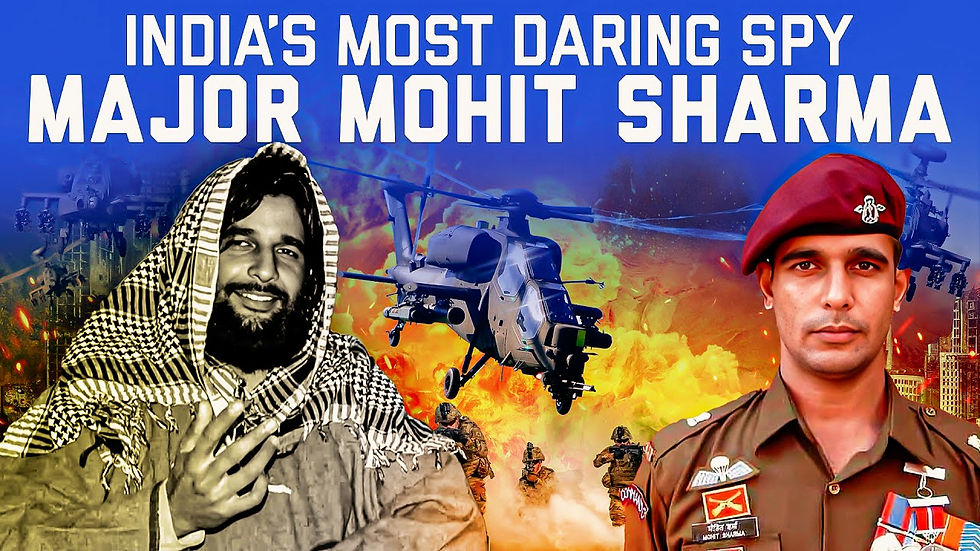🏹🚩Ramayana Unveiled: A Tapestry of Dharma 🕉️, Devotion 🙏, and Destiny 🌠
- telishital14

- Jun 1
- 7 min read
The Ramayana, one of the two great epics of Hinduism alongside the Mahabharata, is a cornerstone of Indian culture, spirituality, and literature. Traditionally attributed to the sage Valmiki, this Sanskrit epic, known as Valmiki Ramayana, weaves a rich tapestry of adventure, morality, and devotion. With its 24,000 verses, seven chapters (kāṇḍas), and 500 sections (sargas), the Ramayana is not just a story but a profound exploration of human values, relationships, and the eternal battle between good and evil. Let’s embark on a detailed journey through this magnificent epic, exploring its origins, structure, characters, cultural impact, and enduring legacy. 🕉️

What is the Ramayana? 📜
The Ramayana is a smriti text, meaning it is a remembered tradition in Hinduism, and belongs to the Itihasa genre, which narrates historical events interwoven with moral and philosophical teachings. Composed between the 7th century BCE and the 3rd century CE, the epic chronicles the life of Rama, the seventh avatar of the Hindu god Vishnu, and his quest to uphold dharma (righteousness). The title Rāmāyaṇa derives from two Sanskrit words: Rāma (meaning "pleasing" or "charming" in the Mahabharata, or "dark-colored" in the Atharvaveda) and ayana (meaning "journey"). Together, they form "Rama’s Journey," a fitting name for an epic that follows the prince of Ayodhya through trials, exile, and triumph. 🌍
The Ramayana is divided into seven kāṇḍas (books):
Bāla Kāṇḍa (The Book of Childhood)
Ayodhyā Kāṇḍa (The Book of Ayodhya)
Araṇya Kāṇḍa (The Book of the Forest)
Kiṣkindhā Kāṇḍa (The Book of Kishkindha)
Sundara Kāṇḍa (The Beautiful Book)
Yuddha Kāṇḍa (The Book of War)
Uttara Kāṇḍa (The Book of the Aftermath)
Each kāṇḍa unfolds a new chapter in Rama’s life, from his divine birth to his ultimate return to Ayodhya as a just king, embodying the ideal of Rāmarājya—a utopian society rooted in justice and virtue. 🏰
Origins and Historical Context 🕰️
Scholars estimate the earliest parts of the Ramayana date back to the 7th–5th century BCE, with later additions extending to the 3rd century CE. According to Robert P. Goldman, the core narrative (books 2–6) was likely composed around 500 BCE, as it lacks references to Buddhism or the prominence of Magadha, which emerged later. The text identifies Ayodhya as the capital of Kosala, predating its later names, Saketa or Shravasti. The Bāla Kāṇḍa and Uttara Kāṇḍa are considered later interpolations due to stylistic differences and narrative inconsistencies, a view supported by scholars like Hermann Jacobi. 📚
The Ramayana’s oral origins and its evolution over centuries make it a dynamic text, shaped by the cultural and spiritual ethos of ancient India. Its timeless appeal lies in its ability to address universal themes—duty, loyalty, love, and sacrifice—while remaining deeply rooted in Hindu philosophy. 🌿
The Structure of the Epic ✍️
The Ramayana is a monumental work, with over 24,000 shlokas (couplets) organized into 500 sargas across seven kāṇḍas. Each kāṇḍa serves a distinct narrative purpose, blending action, emotion, and moral teachings. The epic’s structure reflects the Itihasa genre, which combines historical narrative (purāvṛtta) with lessons on the four goals of human life: dharma (duty), artha (prosperity), kāma (desire), and moksha (liberation). Here’s a detailed look at each kāṇḍa:
1. Bāla Kāṇḍa: The Book of Childhood 👶
The epic begins with sage Valmiki, inspired by the sorrow of a bird’s death, creating the shloka meter to narrate Rama’s story. King Dasharatha of Ayodhya, childless despite three wives—Kausalya, Kaikeyi, and Sumitra—performs a Putrīyā Iṣṭi (fire sacrifice) to beget heirs. Lord Vishnu, responding to the gods’ plea to defeat the demon king Ravana, incarnates as Rama, born to Kausalya. Bharata is born to Kaikeyi, and Lakshmana and Shatrughna to Sumitra. At 16, Rama and Lakshmana accompany sage Vishvamitra to slay demons disrupting rituals, showcasing Rama’s prowess. The kāṇḍa culminates in Rama’s marriage to Sita, daughter of King Janaka, after he strings and breaks a divine bow. 💍

2. Ayodhyā Kāṇḍa: The Book of Ayodhya 🏛️
As Dasharatha prepares to crown Rama, Kaikeyi, influenced by her maid Manthara, demands Rama’s 14-year exile and Bharata’s coronation, citing boons granted by Dasharatha. Bound by his word, Dasharatha reluctantly agrees. Rama accepts exile with grace, accompanied by Sita and Lakshmana. Devastated, Dasharatha dies, and Bharata, refusing to usurp the throne, rules as Rama’s regent, placing Rama’s sandals on the throne as a symbol of his rightful kingship. This kāṇḍa highlights Rama’s adherence to dharma and the pain of familial sacrifice. 😢
3. Araṇya Kāṇḍa: The Book of the Forest 🌲
In exile, Rama, Sita, and Lakshmana live ascetically in the forest. The demoness Shurpanakha, Ravana’s sister, attempts to seduce Rama and attacks Sita, leading Lakshmana to mutilate her. Enraged, Ravana plots Sita’s abduction using Maricha, who transforms into a golden deer. Sita, enchanted, urges Rama to pursue it. When Rama’s cry for help (a ruse by Maricha) alarms Sita, she sends Lakshmana to aid him, leaving her vulnerable. Ravana, disguised as an ascetic, kidnaps Sita. Jatayu.:
4. Kiṣkindhā Kāṇḍa: The Book of Kishkindha 🐒
In their quest to find Sita, Rama and Lakshmana meet Hanuman, the devoted monkey warrior, and Sugriva, the exiled king of Kishkindha. Rama helps Sugriva defeat his brother Vali, regaining the throne. In return, Sugriva pledges his monkey army to aid Rama. Hanuman emerges as a key figure, embodying loyalty and strength. Search parties are dispatched, and the southern party, led by Hanuman and Angada, learns from Sampati (Jatayu’s brother) that Sita is in Lanka. 🦋
5. Sundara Kāṇḍa: The Beautiful Book 🌟
This kāṇḍa focuses on Hanuman’s heroic journey to Lanka. He leaps across the sea, overcoming obstacles like the demoness Simhika and the mountain Mainaka. In Lanka, Hanuman finds Sita in the Ashoka grove, where she resists Ravana’s advances. Hanuman gives her Rama’s ring, reassuring her, and she gives him a jewel as proof of her survival. Before leaving, Hanuman wreaks havoc in Lanka, allowing himself to be captured to confront Ravana. His tail is set ablaze, but he escapes, setting Lanka afire, and returns to Rama with news of Sita. This kāṇḍa is celebrated for Hanuman’s devotion and bravery. 🔥

6. Yuddha Kāṇḍa: The Book of War ⚔️
Rama, Lakshmana, and their monkey allies, joined by Ravana’s brother Vibhishana, march to Lanka. The monkey engineers Nala and Nila build the Rama Setu (bridge) to cross the sea. A fierce war ensues, with notable battles like Lakshmana’s near-fatal wounding by Indrajit (Ravana’s son) and Hanuman’s retrieval of the sanjeevani herb. Rama ultimately slays Ravana, and Vibhishana is crowned king of Lanka. To address doubts about Sita’s chastity, she undergoes the Agni Pariksha (fire ordeal), emerging unscathed, proving her purity. Rama, Sita, and Lakshmana return to Ayodhya, where Rama is crowned, marking the festival of Diwali. 🎉
7. Uttara Kāṇḍa: The Book of the Aftermath 👑
This controversial kāṇḍa, considered a later addition, narrates Rama’s reign, the birth of his sons Lava and Kusha, and the Ashvamedha sacrifice. Public doubts about Sita’s chastity lead Rama to exile her, despite her purity. Sita raises Lava and Kusha in Valmiki’s hermitage. Years later, the twins recite the Ramayana at Rama’s court, revealing their identity. Sita proves her purity again but chooses to return to Mother Earth. Rama eventually ascends to heaven. Scholars debate this kāṇḍa’s authenticity due to its portrayal of Rama’s actions, like Sita’s exile, which some see as inconsistent with his dharmic character. 🌍

Characters: The Heart of the Ramayana 💖
The Ramayana’s characters are archetypes of virtue, duty, and devotion, each contributing to its moral framework:
Rama: The ideal man and king, embodying dharma, loyalty, and compassion. As Vishnu’s avatar, he upholds righteousness despite personal sacrifices.
Sita: The epitome of devotion and resilience, Sita’s unwavering love for Rama and her trials highlight feminine strength and purity.
Lakshmana: Rama’s loyal brother, whose dedication and bravery make him a model sibling.
Hanuman: The devoted monkey warrior, symbolizing strength, loyalty, and selfless service. His feats, like leaping to Lanka, are legendary.
Ravana: The complex antagonist, a learned but arrogant demon king whose obsession with Sita leads to his downfall.
Dasharatha, Kausalya, Kaikeyi, Bharata, Vibhishana, Sugriva: Each character adds depth, showcasing familial bonds, loyalty, and moral dilemmas.
These characters resonate across cultures, inspiring art, literature, and moral teachings. 🖌️
Cultural and Global Influence 🌏
The Ramayana transcends India, influencing Southeast Asia, where it has been adapted into local languages and traditions:
India: Beyond Valmiki’s text, regional versions like Tulsidas’s Ramcharitmanas (Awadhi), Kamban’s Ramavataram (Tamil), and Krittivasi Ramayan (Bengali) reflect local sensibilities. The Ramayana shapes festivals like Diwali (celebrating Rama’s return) and Vijayadashami (marking Ravana’s defeat).
Southeast Asia: The Thai Ramakien, Indonesian Kakawin Ramayana, Cambodian Reamker, and Filipino Maharadia Lawana adapt the epic to local cultures, incorporating unique elements like the Thai portrayal of Hanuman as a playful figure or the Javanese inclusion of the demigod Semar.
Jain and Buddhist Versions: Jain texts like Vimalsuri’s Paumachariyam portray Rama as a non-violent monk, while the Buddhist Dasaratha Jataka reimagines the story without Ravana, focusing on exile and family.
The Ramayana’s influence extends to art, with temple carvings (e.g., Prambanan in Indonesia), paintings, and performances like Ramlila and Balinese kecak dance. Modern adaptations, like Amish Tripathi’s Ram Chandra Series and Devdutt Pattanaik’s Sita, reinterpret the epic for contemporary audiences. 🎭
Moral and Philosophical Teachings 🧠
The Ramayana is a guide to dharma, illustrating ideal roles:
Rama as the perfect son, husband, and king.
Sita as the devoted wife and symbol of purity.
Lakshmana as the loyal brother.
Hanuman as the selfless devotee.
It explores themes of duty, sacrifice, loyalty, and the triumph of good over evil. The concept of Rāmarājya—a just, harmonious society—remains a cultural ideal. The epic’s philosophical depth, blending action with ethical dilemmas, makes it a timeless moral compass. 🌟
Why the Ramayana Endures ❤️
The Ramayana’s universal appeal lies in its relatable characters, moral complexity, and spiritual depth. It speaks to the human experience—love, loss, duty, and redemption—while offering lessons on living virtuously. Its adaptability across cultures, from India to Southeast Asia, and its presence in art, literature, and festivals ensure its relevance. Whether through Valmiki’s Sanskrit verses or modern retellings, the Ramayana continues to inspire, teaching us to navigate life’s challenges with grace and righteousness. 🙏

A Journey Beyond Time ⏳
The Ramayana is more than an epic; it’s a cultural and spiritual legacy that has shaped civilizations for millennia. From Rama’s unwavering dharma to Sita’s resilience, Hanuman’s devotion, and Ravana’s tragic flaws, the story offers profound insights into the human condition. As we light diyas on Diwali or witness a Ramlila performance, we connect with a narrative that transcends time, reminding us of the power of virtue and the eternal quest for justice. Dive into the Ramayana, and let its timeless wisdom guide your journey. 🌼




Comments